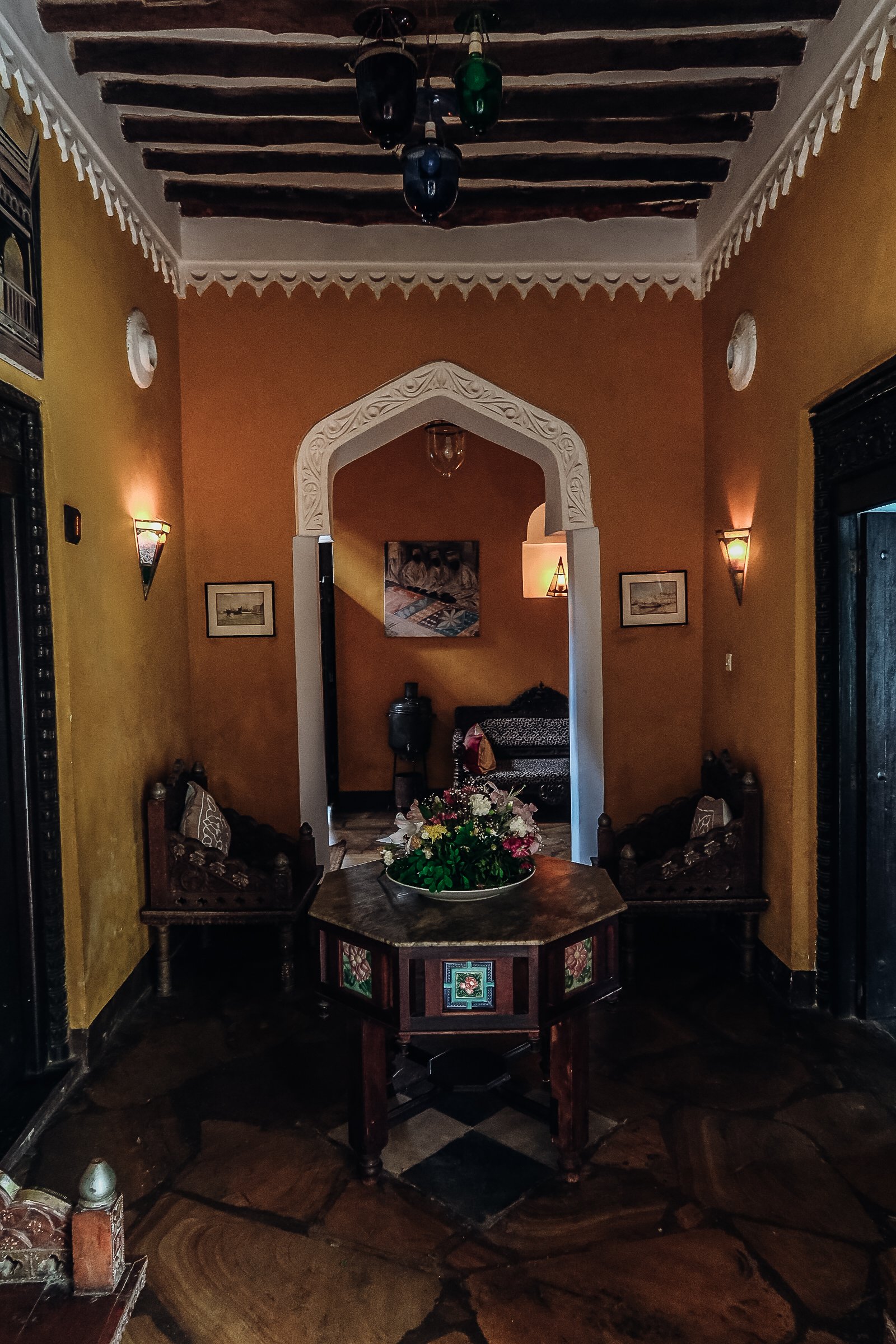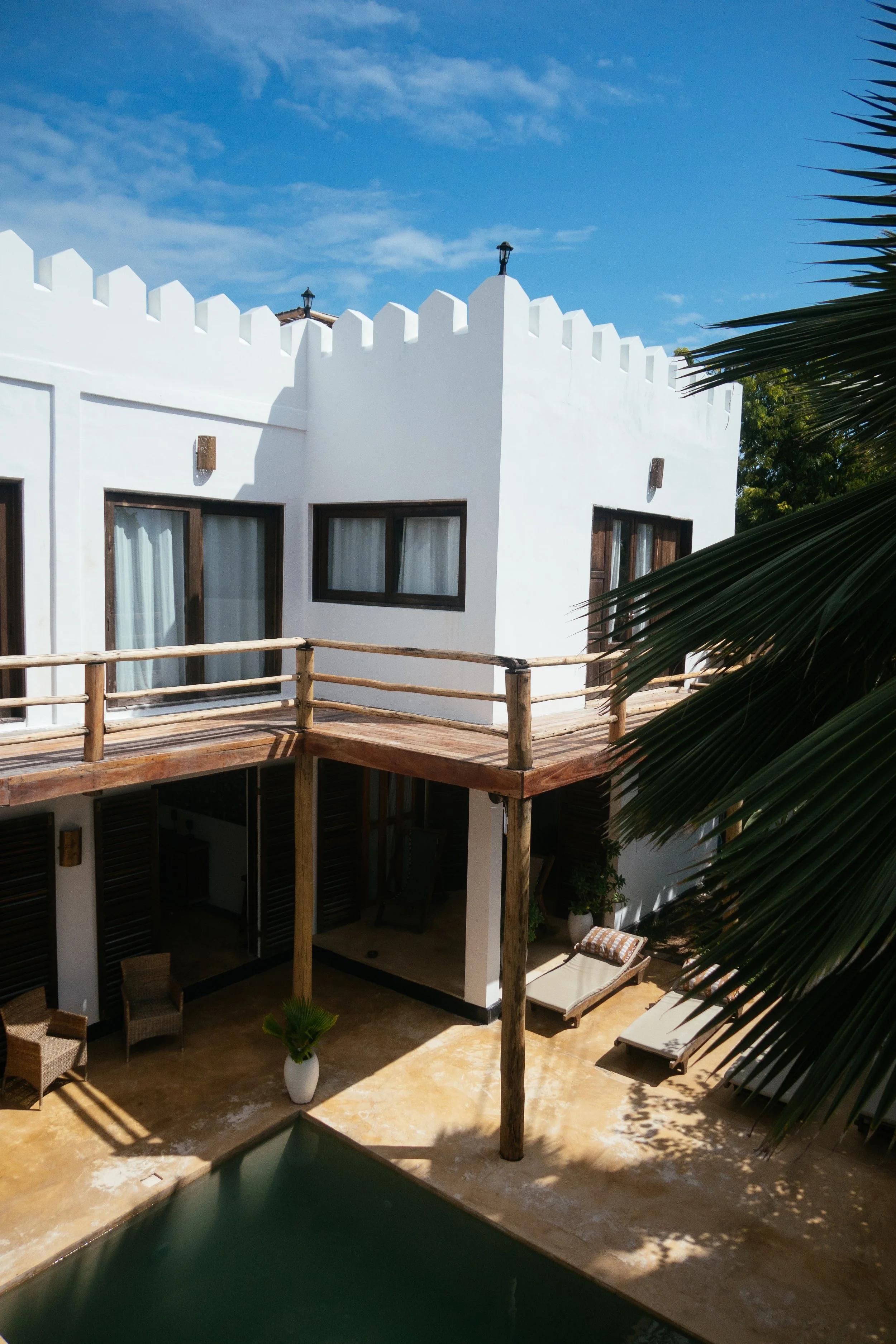A Palace for a Princess, Reimagined by a Diplomat
You could say the story begins on a train.
A Chinese-built locomotive, rattling across the Tanzanian plains, the kind of slow, stuttering journey that leaves red dust on your clothes and traces of a colonial past through the window. Onboard: a French ambassador. Not quite retired. Not quite restless. But searching.
Francis Saudubray wasn’t supposed to end up in Zanzibar. At the time, he was serving as France’s Ambassador to Zambia and Malawi, a long-standing career diplomat who had spent much of his professional life orbiting Africa. Kinshasa. Bamako. Ouagadougou. Cities that leave a mark on you.
He thought maybe he’d settle in Burkina Faso. Bobo-Dioulasso was on the table. But the deal fell through. “Fortunately,” he says now, with the hindsight of a man who dodged fate by an inch. “It would not have been a good idea, not with what’s happening there now.”
He wasn’t a hotelier, just a diplomat with a curious mind, a love for the continent, and time to wander. So he boarded the TAZARA—the once-grand symbol of Pan-African unity—and ended up on the edge of Dar es Salaam, unimpressed and slightly disoriented. Then, as one should always do when the mainland underwhelms, he caught a boat. And crossed the sea.
That’s when Zanzibar happened.
“I wanted a place of my own. By the sea, yes, but with history, with soul, with interesting people.”
It was during one of those mid-career journeys that he landed, almost by accident, on this piece of Indian Ocean fantasy. One day, he was trundling across Tanzania in a dusty carriage, flanked by government-assigned bodyguards. Next, he was wandering the crooked lanes of an Arabian town built from coral stone, layered with centuries of trade and empire.
“And there it was,” he says. “Kholle House.”
A Princess with a Vision
Zanzibar’s Stone Town has no shortage of historic buildings—but few are as quietly majestic, or as personally rediscovered, as Kholle House. Built in the mid-19th century by Sayyida Kholle, the daughter of Sultan Said bin Sultan of Oman and Zanzibar, it was a palace of sorts, tucked into the medina. She was one of over thirty royal children, a half-sister to Sultan Barghash, and to the famously rebellious Princess Salme, who fled the island for Europe and penned one of Zanzibar’s most enduring memoirs.
Princess Kholle, though less infamous than her sister, may have been just as quietly radical. Though records are sparse, most believe she commissioned the home either as a guest residence, a gallery, or a space to receive merchants and dignitaries—a rare act of agency for a woman in 19th-century Zanzibar.
“Just the fact that she built it is fascinating,” Francis says. “She must have had her own money, her own vision. The house reflects that, it's elegant but intentional.”
Of course, when he first saw it, Kholle House wasn’t quite a palace. It was just an old building. A half-building, in fact. At some point, it had been physically divided, likely the result of an inheritance dispute, and when Francis came upon it, he could only buy the left side.
“I thought it’d be mine. Just a home. Six, seven rooms. Manageable.”
But Zanzibar had other plans. Before long, the neighbours from the other side came knocking. Their half was in danger of collapse, and in a twist of fate, they offered to sell.
“That gave me leverage,” Francis says. “I told them, I’ll buy it, but you leave everything inside.” That small demand unlocked something much bigger. “Among the rubble were original pieces, sofas, carved wooden shelves, exact matches to what you'd see in the Sultan’s palace museum, which sadly is now closed.”
Only after the full building was in his hands, and after a long paper trail, did the true identity of the house come to light.
“I’d accidentally bought a royal residence,” he says. “Or at least, something meant to impress royals.”
Princess Kholle may no longer walk these halls, but her legacy lives in the carved doors, in the open-air courtyard, in the silent conviction of the walls themselves. And now, layered atop her vision, is Francis’s own, a diplomat’s homage to a long-forgotten royal, a woman with a sense for design, and a sense of self.
Rebuilding Without Blueprints
Restoring Kholle House wasn’t a matter of fresh paint and polish. It was a slow, stubborn kind of resurrection, the kind where every beam comes with a question mark.
“It was handmade. No contractors, no shortcuts,” Francis says. “We used fundis—local artisans trained by UNESCO after Stone Town became a World Heritage Site. They knew the old ways. How to mix coral rag with lime. How to carve mango wood. It had to be authentic.”
The house had suffered from decades of neglect. The façade, with its Omani arches and carved doors, stood upright, austere and silent. But the interior had been eaten by time. Francis, orchestrating from Paris between diplomatic posts, worked closely with his Zanzibari partner to restore it room by room, inch by inch.
There were surprises. When they began digging the courtyard to install a plunge pool, the soil coughed up something strange: hundreds of broken pieces of bone china.
“I imagined someone, maybe in anger or panic, just chucking the dishes out the window,” he says. “It was like the house whispering, I used to be grand.”
From that moment, Francis began collecting, Chinese vases, Japanese porcelain, Dutch tiles, old carpets from Armenia, mahogany salvaged from Swahili homes. Each room became a kind of cultural mosaic, a tribute to the world of the Indian Ocean: where Arab traders, Persian poets, German missionaries, and French diplomats once collided.
And yet, beneath all its curiosities, Kholle House never loses its footing. It remains unmistakably Zanzibari. The carved doors are still there. The mashrabiya balcony. The rooftop terrace overlooking Stone Town’s crumbling spires and the distant sea.
“The back of the house was almost gone,” Francis says. “So we borrowed a bit. We brought in Anglo-Indian influences, like what you see in the Old Dispensary. A little lighter. A little more colonial, but balanced.”
He pauses, amused. “It’s a mix. But it works. Much like Zanzibar itself.”
Kholle’s Seaside Sister
Years after restoring Kholle House, Francis wasn’t planning on building again. But Zanzibar has a way of nudging you forward.
An acquaintance, whose wife happened to be a colleague of his from France’s National Audit Office, introduced him to a house by the sea in Jambiani, a village on the island’s eastern shore where the rhythm is dictated by tides, not traffic. The house was basic: whitewashed walls, a pitched makuti roof, and not much else. But the land had potential.
“And then,” Francis says, “we had an idea. Flatten the roof. Carve a wide stone terrace, just like the one at Kholle House. Make the two properties speak to each other—different, but related.”
And so Kholle Villa was born. Not a copy of its Stone Town sibling, but a kind of coastal echo.
Where Kholle House leans into Swahili history and the hushed grandeur of the 19th century, Kholle Villa is all air and ease, a place for sarongs, sandy feet, and morning light slanting through linen curtains. There are five master bedrooms, a serene open-plan living area, and that generous terrace with the most beautiful ocean view.
“It’s the exhale to Kholle House’s inhale,” Francis says.
But the spirit of connectivity remains. Both homes carry the imprint of Francis’s diplomacy, not just in his personal touches (the ceramics, the artworks, the oddity of a Japanese vase beside a carved Indian arch), but in the way they host differences. Architecture as conversation. Culture as invitation.
“There, by the sea,” he says, “you just want to swim, read, maybe drink a good rosé. It’s lighter. But it still belongs to the story.”
The Next Chapter
Is he done with Zanzibar? Not even close.
“I believe if you’re alive, you should have projects,” he says. “Otherwise, what’s the point?”
He’s already acquired one of the neighbouring houses beside Kholle House, which he hopes to reimagine into a garden spa — tiled courtyards, serene hammams, and a few new rooms tucked discreetly into the walls. Just one more to go, and the hammam dream becomes possible.
Dear to his heart is a different kind of project — less bone china, more brass tacks. After years of polishing Zanzibar’s past for a certain kind of luxury traveler, Francis is thinking in the opposite direction: a well-designed, affordable hotel. Thoughtful, but simple. Honest.
He’s seen the gap too often, budget travelers left to navigate crumbling guesthouses where a working fan and intact mosquito net are somehow luxuries. He wants to fix that.
“Fifty dollars should buy dignity,” he says. “A proper bed. Functioning AC. A private bathroom. Clean nets. You can still be decent without all the carved doors.”
And yet, whether it’s a coral-stone palace or a $50-per-night hideaway by the sea, what ties Francis’s work together is something harder to price: respect for place. A reverence for what came before. A curiosity for what can be.
You feel it most at Kholle House, where the past clings to the walls in the most beautiful way, not as nostalgia, but as presence. A quiet reminder that history isn’t always gone, sometimes, it’s simply waiting to be noticed. Maybe Princess Kholle never lived here. But someone like her did.
And now, so can you.









